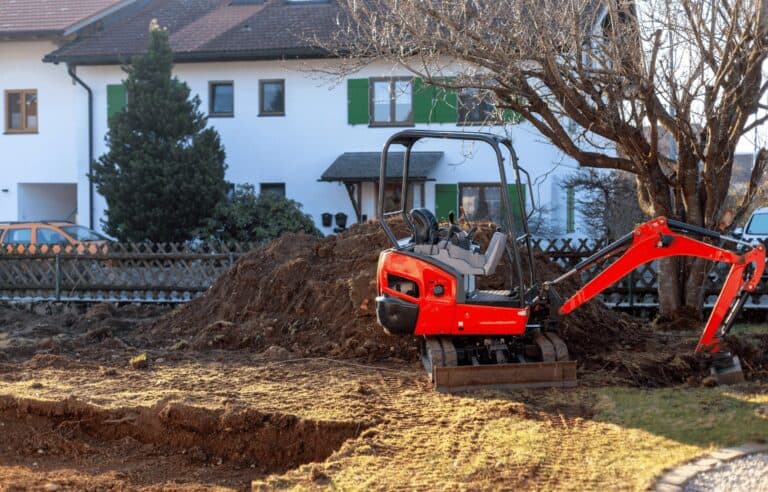Los Angeles, CA is known for its varied terrain, from coastal flats to hillside neighborhoods. But with that diversity comes land management challenges—erosion, poor drainage, and unstable soil can create serious problems for homeowners and developers alike. Whether you live in a canyon home in Beverly Hills, a hillside property in Echo Park, or a valley lot in Sherman Oaks, knowing when your land needs excavation or regrading is critical.
At Legendary Demolition – Los Angeles, CA, we help property owners prepare and protect their land with expert excavation and grading services. If your home or property is showing signs of drainage issues, instability, or unusable terrain, here are the top signs that excavation or regrading may be needed.
Water Pooling on Your Property
Despite its dry climate, Los Angeles experiences intense seasonal rains, especially during winter storms. If you notice water pooling in certain parts of your yard or around your foundation, that’s a clear sign of improper grading. Flat or sunken areas on your lot may be trapping water, putting your foundation and landscaping at risk.
Regrading helps redirect water away from your home and toward proper drainage zones. In cases where water naturally collects due to the surrounding terrain, excavation may be required to install French drains, dry wells, or stormwater channels that move water off your property safely and efficiently.
Foundation Cracks or Sinking Structures
Hillside construction is common in Los Angeles, but if not supported by solid ground and proper drainage, your home or structure could begin to shift. Soil movement, often caused by water infiltration and poor grading, can result in cracks in your foundation, uneven floors, or sticking doors and windows.
If you’re noticing these issues, excavation may be necessary to remove unstable or moisture-rich soil and replace it with compacted fill. Regrading can then reshape the slope around your structure, minimizing water retention and preventing further structural movement.
Visible Erosion or Soil Washout
In areas like Malibu, Bel Air, and Hollywood Hills, erosion is a constant concern due to the steep terrain and loose soil. After a heavy rain, you may notice washed-out mulch, exposed roots, or bare patches on your property. These are signs that runoff is damaging your land.
Grading helps control water flow and protect the topsoil, while excavation can be used to create retaining structures or reshaped slopes that reduce erosion. Installing erosion control systems like berms, boulders, or terracing may also be part of the solution to stabilize your property long-term.
Moisture in Basements or Crawl Spaces
Though basements are less common in Southern California, some homes in areas like Pasadena and San Pedro do have below-grade spaces that are vulnerable to moisture problems. Improper grading around the exterior of your home can cause water to collect and eventually seep into crawl spaces or basement walls.
Regrading the soil so it slopes away from your home is a key first step in protecting these spaces. Excavation may also be needed to install waterproofing systems, foundation drainage, or vapor barriers that block moisture from entering vulnerable interior areas.

Uneven or Sloped Yards
Many Los Angeles properties sit on hillsides or oddly shaped lots, leaving homeowners with sloped or uneven terrain that limits outdoor use. If you’ve struggled to find level space for a patio, garden, or play area, excavation and regrading may be your solution.
We can excavate to remove excess soil or reshape a slope, then grade the area to create a usable, flat surface that supports landscaping, hardscaping, or even new construction. Leveling your yard not only increases functionality but also boosts your property’s value and curb appeal.
Pooling Water on Driveways and Walkways
Paved surfaces like driveways, walkways, and patios should allow water to run off quickly. But when the subgrade shifts or if the area is poorly graded, water can begin to pool, creating slip hazards and degrading materials over time.
Regrading can fix the slope of adjacent land, while excavation may be needed to remove and replace settled or compacted subsoil. By correcting these drainage issues, you protect your concrete or paver surfaces and ensure long-term safety.
Preparing for a New Build or Addition
Before any new construction—whether it’s a guesthouse in Venice, a detached garage in Studio City, or a pool in the Valley—your land must be excavated and graded. This process creates a stable, code-compliant surface to build on and prevents future issues like foundation settlement or water intrusion.
We work closely with contractors, architects, and inspectors to excavate for foundations, utilities, and retaining walls, then grade the land to meet local slope and drainage regulations. In hillside areas especially, this preparation is key to passing inspections and protecting your investment.
Restoring Overgrown or Difficult Terrain
Vacant or neglected lots often become overgrown or unusable due to debris, erosion, or years of poor drainage. Excavation and grading can help you reclaim this land, turning it into functional outdoor space or a build-ready site.
We specialize in clearing brush, removing unstable soil, and reshaping terrain to restore the health and usability of your property. Whether you plan to landscape, develop, or sell, having a well-graded lot makes all the difference.
Why Los Angeles Properties Need Expert Grading and Excavation
Los Angeles’ landscape is as diverse as its architecture. From the sandy soils of the Westside to the steep canyons of the East, no two lots are the same. That’s why a customized approach to excavation and grading is so important.
At Legendary Demolition – Los Angeles, CA, we understand the specific challenges of SoCal terrain. We offer excavation and grading services tailored to the unique needs of your property, always ensuring that the job meets city code, minimizes environmental impact, and enhances long-term land performance.
